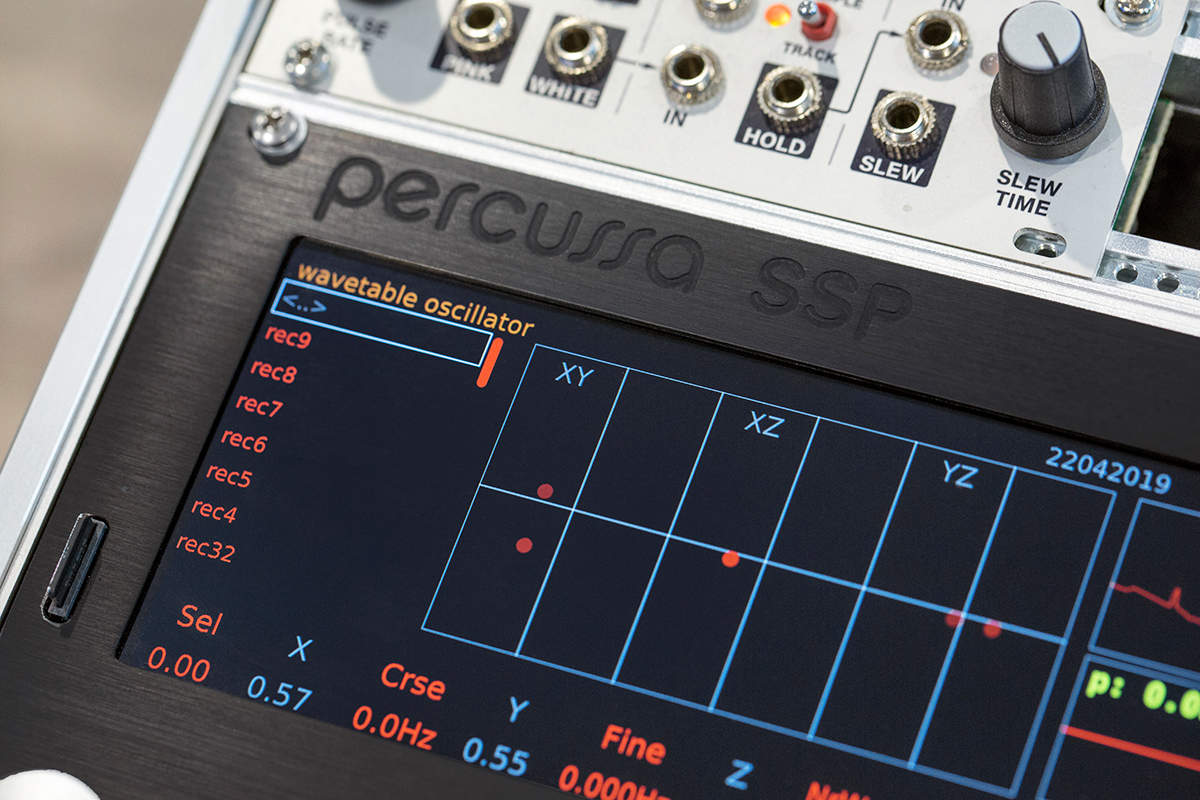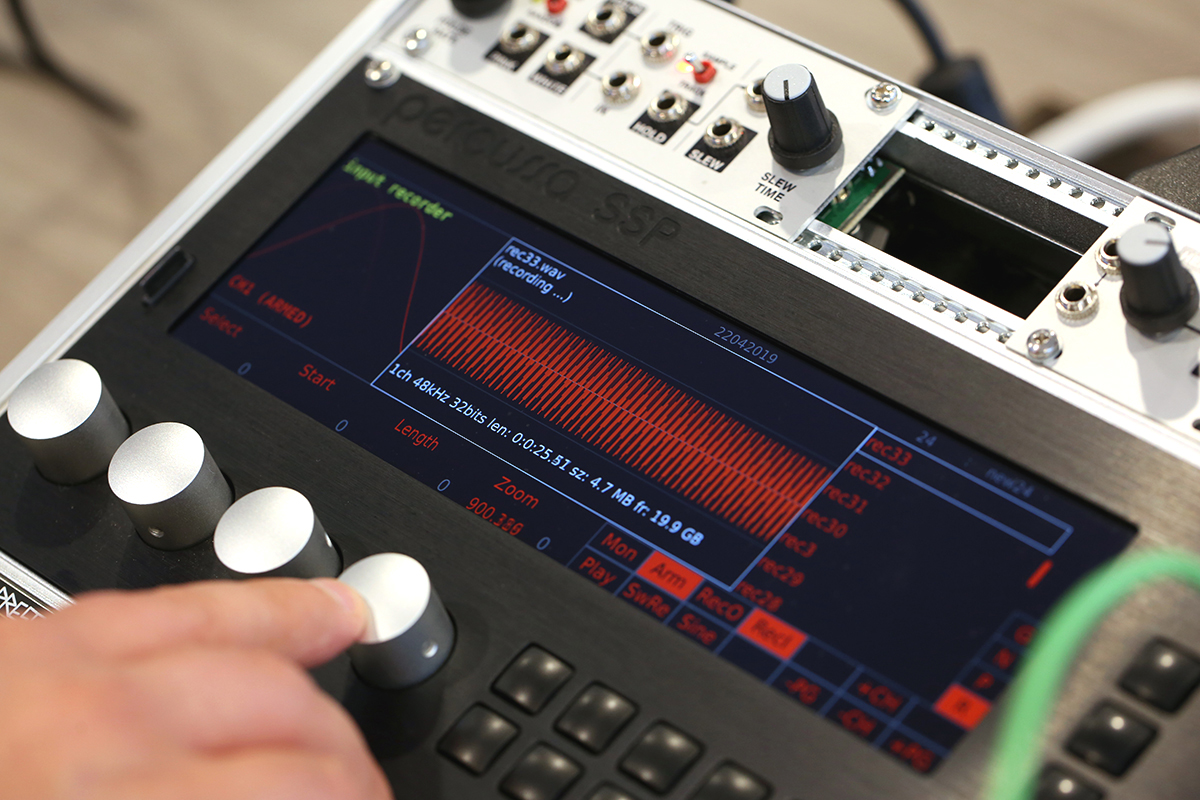Yesterday, Bert and Céline from Percussa came by our showroom to demonstrate some of the features of their Super Signal Processor (SSP), an insanely powerful general-purpose DSP module capable of filling basically any role within a modular system. In fact, SSP itself houses an entire virtual modular system: a means of populating a grid with a huge assortment of virtual modules which can be connected together in a seemingly endless number of ways.
By allowing such extensive control for creating novel signal paths, the SSP can easily become its own full instrument—but when interfacing with MIDI controllers or other CV-capable gear, it becomes even more clear that it is a shape-shifting device capable of filling any role in a studio or performance setup, no matter how simple or how complex the task may seem.
 Multidimensional timbre controls for the Wavetable Oscillator module in the SSP.
Multidimensional timbre controls for the Wavetable Oscillator module in the SSP.
Extended Synthesis and Extended Control
By employing a processor with far more power than the average digital Eurorack module, the SSP makes possible a huge array of complex behaviors. Its internal audio modules include dedicated engines for sample playback & manipulation, realtime granular processing, wavetable synthesis, physical modeling, and much more. Aside from these more advanced synthesis features, a host of traditional synthesis-style modules (oscillators, filters, etc.) make the SSP fully capable of a staggering array of synthesis techniques new and old. Modules can be combined in nearly any way—LFOs can act as fully-functional audio oscillators, delay lines can produce Karplus-Strong style effects...just as in a conventional Eurorack setup, the potential is limited only by one's own imagination.
The SSP is navigated and programmed via a series of buttons and encoders. Once a patch has been created, it can be stored into internal memory for later recall. And while SSP provides no dedicated performance interface, it does provide access to an enormous number of control methods. There is, of course, a series of internal modulation sources—LFOs, envelopes, sequencers, switches, and more—but the SSP also features ample I/O for integrating into any workflow. It can act as a MIDI host for any class-compliant USB controller, so one can easily plug in their preferred MIDI controller to play any internal parameter.
 Recording and editing external signals with the Percussa SSP.
Recording and editing external signals with the Percussa SSP.
SSP also has a large group of DC-coupled inputs and outputs, which can be used indiscriminately as audio or CV I/O. This makes it possible to directly control parameters with external CV sources, to use the SSP to control external modules, and even to record incoming modulation and audio into a built-in sample editor for later use.
Listing the SSP's features and endeavoring to detail all of its possibilities would be a futile effort—suffice to say that the SSP can do mostly anything, from realtime granulation to microtonal quantization, outright noise to huge, fully polyphonic wavetable pads. Check out Bert's demo above to see more of what is possible!
